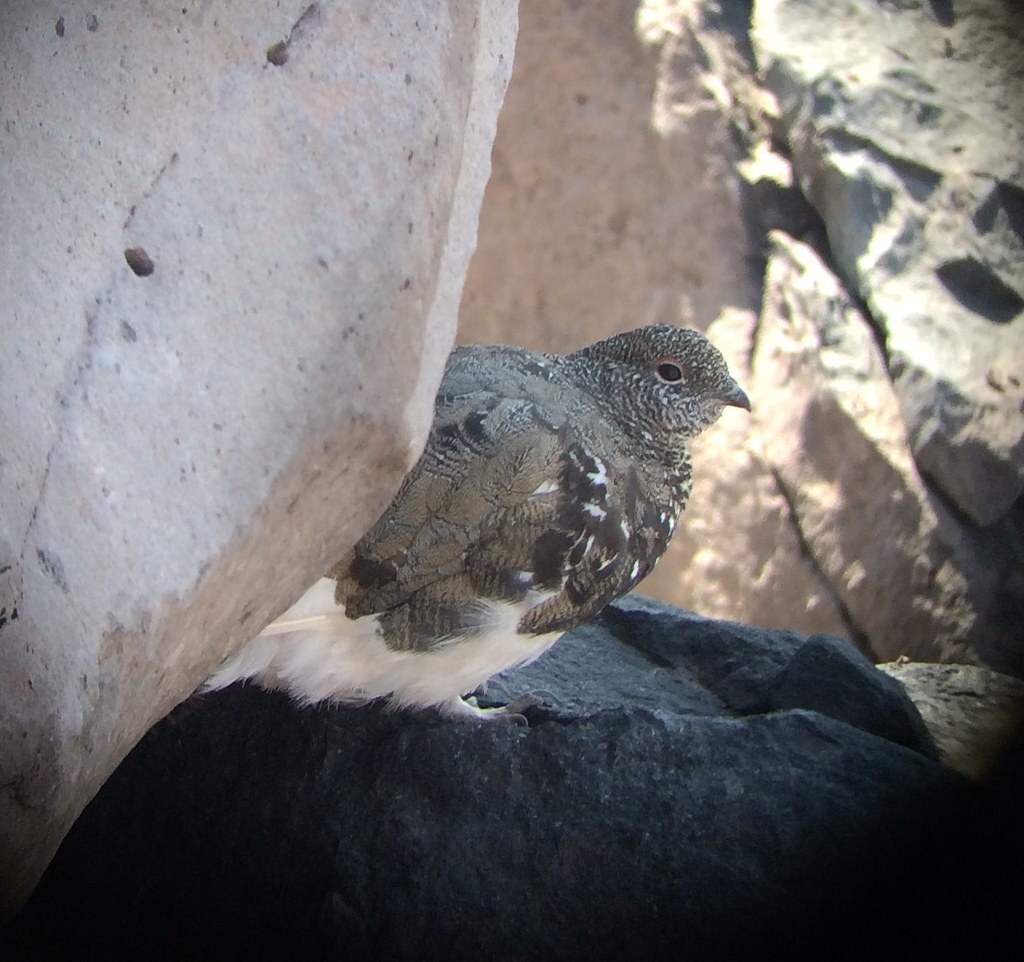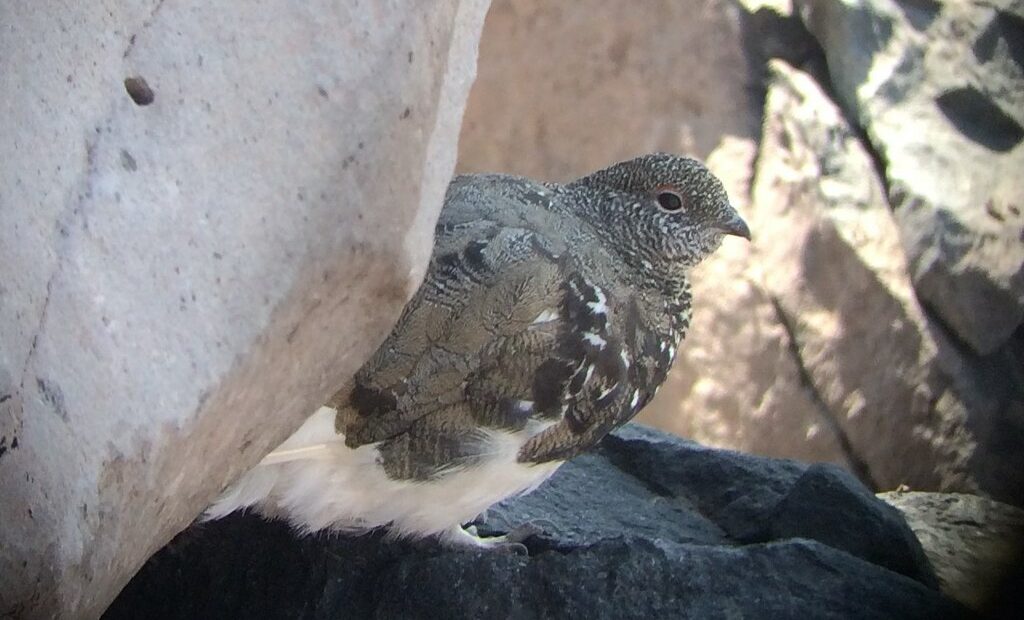
Mt. Rainier Ptarmigans Are ‘Cute, Funny Little Birds.’ And They May Get More Federal Protection
READ ON
If you’ve ever been hiking in the Cascades, high up in the alpine meadows, and were spooked by a streak of a bird, a plume of feathers that darted right in front of your face, you may have come across the Mount Rainier white-tailed ptarmigan.
This chicken-sized grouse stays hidden, until you are right upon it. Then it squawks and flies away.
“They especially like those pretty little meadows that backpackers and hikers like to go to, with the pink heather and the flowers blooming in the little creeks below the snow bank. I like to joke that the main habitat feature that whitetail ptarmigan select for is a pretty view,” said Terry Frederick, a wildlife biologist with the U.S. Fish and Wildlife Service.
These birds need the cold, high alpine climates backpackers love to enjoy. They migrate between lower elevation winter areas and higher elevation summer habitat above the treeline.
Their habitat is quickly shrinking as climate change warms the areas they depend on. That’s why the service has proposed listing them as threatened on the Endangered Species List.
“They aren’t very well adapted to heat, and they will seek out shade and cool microclimates,” Frederick said.
Climate change is their biggest threat. It’s the reason the service made this decision. As these places warm, biologists expect more species to join the ranks of plants and wildlife solely threatened by climate change, from meltwater lednian stoneflies to eastern black rail to polar bears.
Although it’s difficult to know how many of the birds are around now – their habitat is hard to get to and no large-scale surveys have been conducted – biologists believe this subspecies is found throughout Washington’s Cascades and possibly into British Columbia.
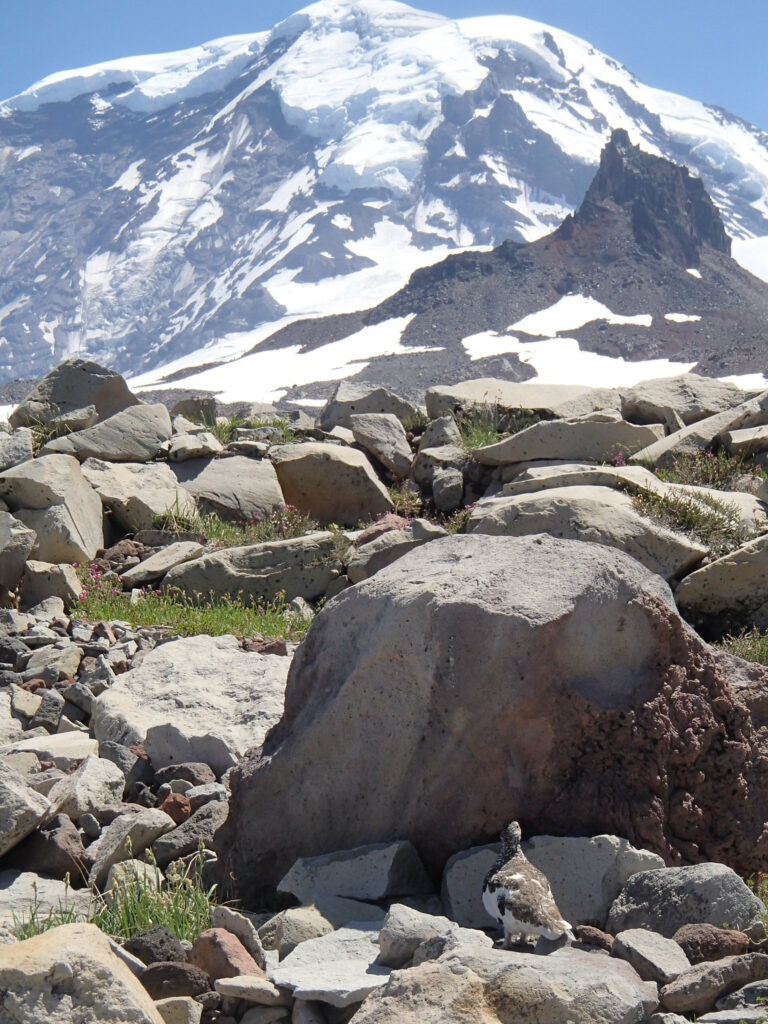
The Mount Rainier white-tailed ptarmigan is appropriately named, seen here high up in the alpine environment near the mountain. CREDIT: Teal Waterstrat/USFWS
In the Northwest, Frederick says the Mount Rainier white-tailed ptarmigan subspecies will mostly lose habitat because of climate change. She says most of the alpine vegetation the birds rely on will be lost by the end of the century. All except at Mount Rainier itself, she says because it’s so big and tall.
“Studies have shown there’s this relationship that mountain tops are warming at a faster rate than other places except for maybe the Arctic. Those warmer summers mean less melting snow, which supports the vegetation that the ptarmigan eat.
“Also, trees are moving upslope as the climate gets warmer and as they move upslope, the space for alpine vegetation above the trees is shrinking and it’s just getting squeezed and squeezed and squeezed until eventually there will be nothing left in many places,” Frederick said.
The Washington Department of Fish and Wildlife says the birds are highly sensitive to climate change and will experience “increases in winter minimum temperatures, increased temperatures overall and reduced snowpack.” The state calls it a species of greatest conservation need.
To protect the birds, Frederick says, they’ll first have to find “small sites where there’s refuge from the warming climate, and that’s going to be a challenge to figure out how to create those.”
She says they’re “cute, funny little birds.” They can’t fly without screaming, she says.
Their constantly molting feathers – milky white in the winter, mottled white and brown in the spring, brown in the summer – camouflage them throughout the year. They have feathers on their feet, which helps them walk on top of the snow, like a snowshoe hare. They sit statuesque to hide from predators, mainly hawks and falcons, thus scaring many a hiker. They burrow in the snow during extreme weather.
“It’s like a little igloo in there sheltered behind the ice and the extreme cold,” Frederick said.
Without the high-mountain meadows and bare patches, the Mount Rainier white-tailed ptarmigan has few places to go. It’s really not adapted well to warmer climates, Frederick says.
“There are those high mountain areas that conservationists used to think were protected,” she said. “And they needed to focus on lower elevation areas that had other threats. Now we’re starting to rethink that assumption.”
Related Stories:
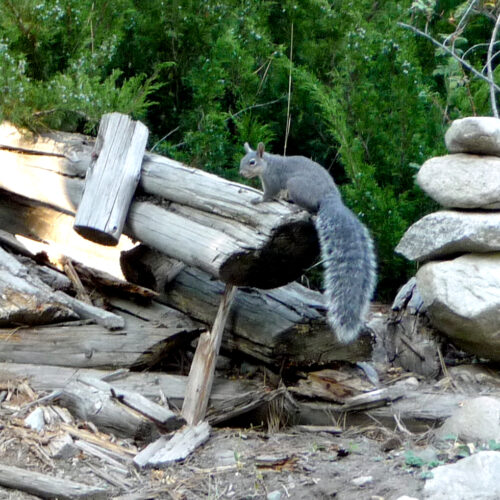
Washington may upgrade Western gray squirrel to ‘endangered’ status
A Western gray squirrel. (Courtesy of the Washington Department of Fish and Wildlife.) Listen (Runtime 0:57) Read Washington’s Western gray squirrels are in trouble. So much so that state officials
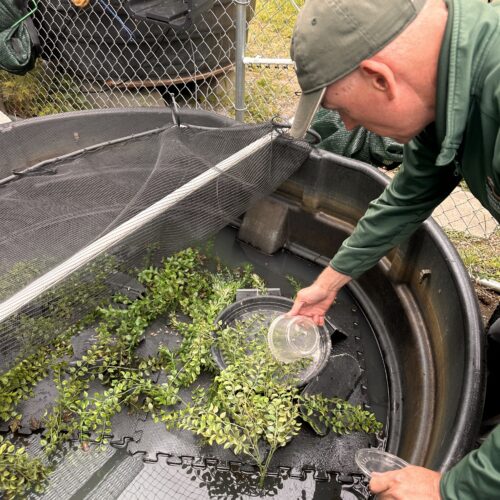
Northern leopard frogs growing leaps and bounds at Northwest Trek, preparing for re-release in the wild
At Northwest Trek in Eatonville, Washington, there are about 300 northern leopard frogs, named for their spotted skin, swimming around in four tanks and getting ready for their new home.
The frogs are part of a conservation project that Northwest Trek is partnering with the Washington Department of Fish and Wildlife, the United States Fish and Wildlife Service, the Oregon Zoo and Washington State University on. The goal is to restore this native species, which became endangered in the state in 1999.
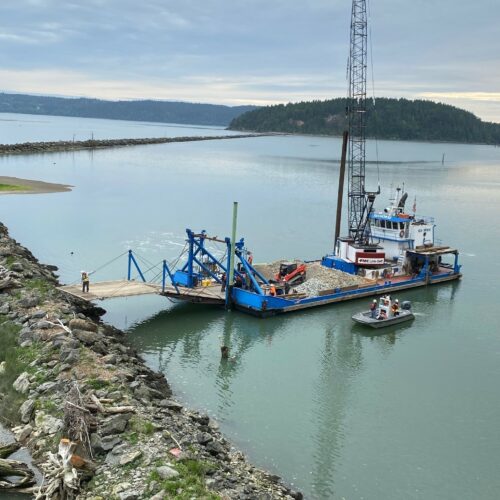
Dead salmon prompt Army Corps of Engineers to repair Skagit River jetty
The Army Corps of Engineers began emergency repair work May 22 on a jetty that sits at the mouth of the Skagit River’s North Fork, near La Conner.
Crews will use cobble and sediment to essentially plug porous areas of the McGlinn Island Jetty. Those gaps have stranded, harmed or killed out-migrating juvenile salmon this spring, according to a press release from the Swinomish Indian Tribal Community.

